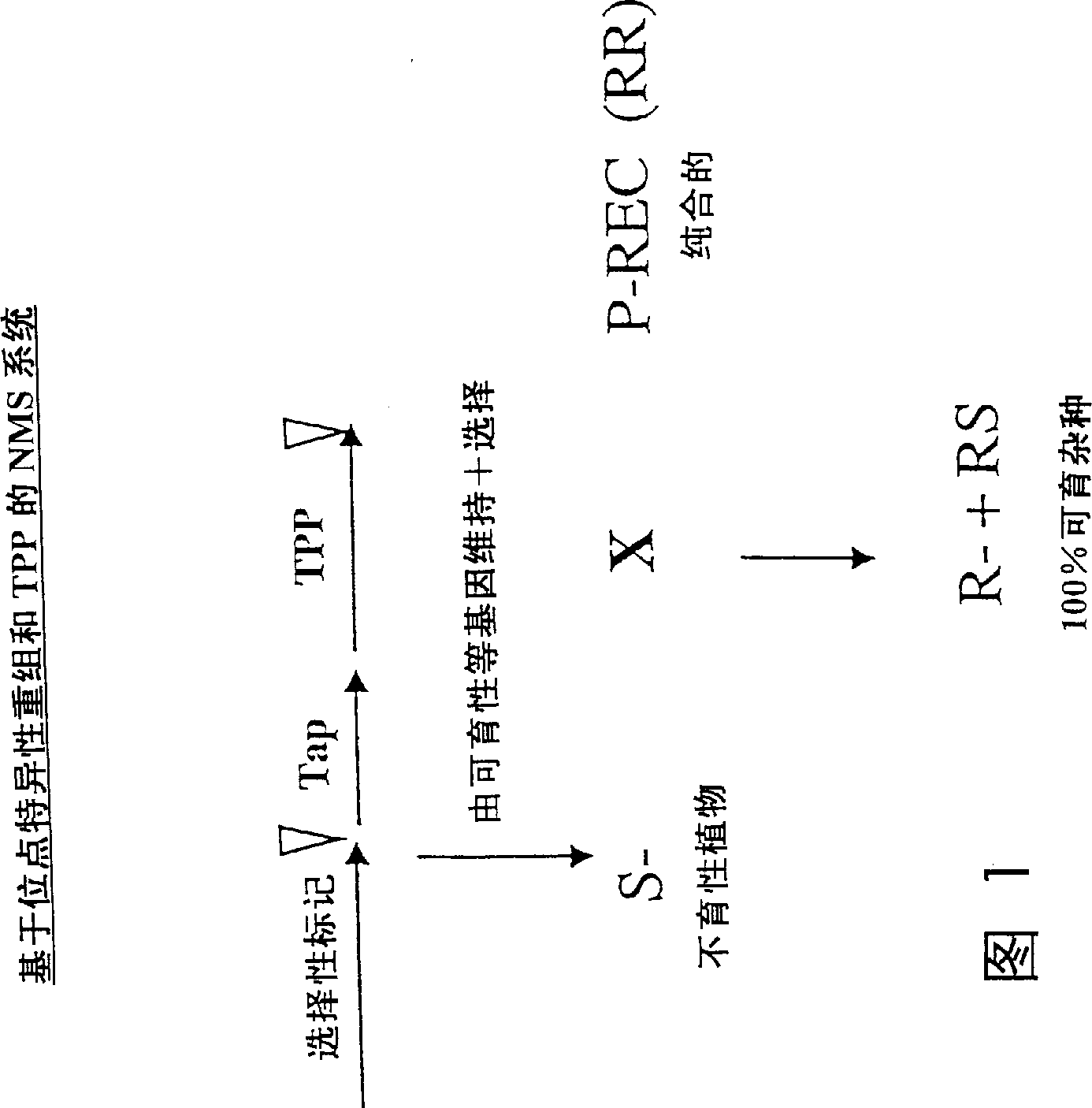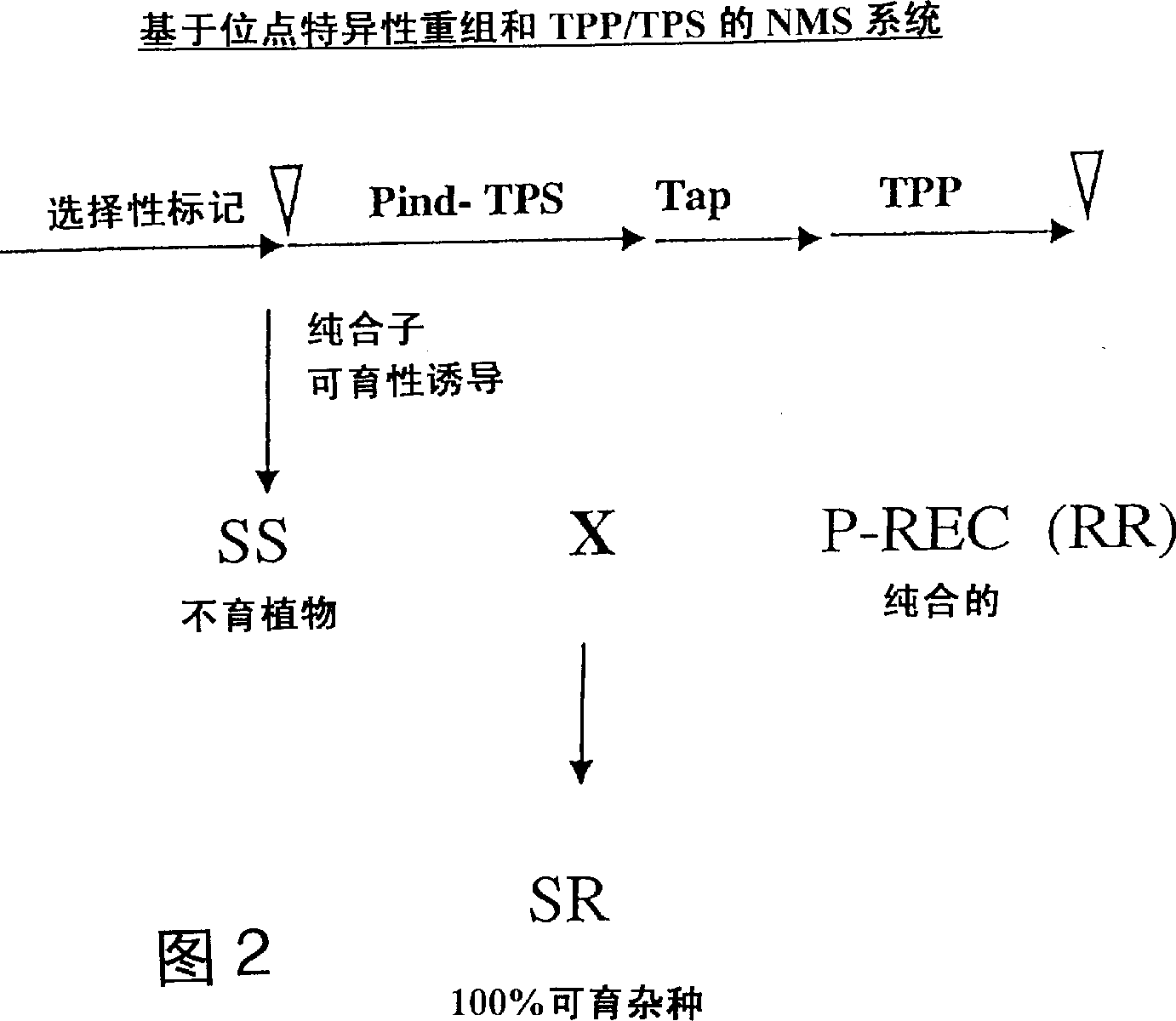Nuclear male sterile plants, method of producing same and method to restore fertility
A male sterility, plant technology, applied in the fields of botanical equipment and methods, plant products, biochemical equipment and methods, etc., can solve the problem of the lack of further teaching on the properties of gene expression to be blocked
- Summary
- Abstract
- Description
- Claims
- Application Information
AI Technical Summary
Problems solved by technology
Method used
Image
Examples
Embodiment 1
[0089] Transformation of Tobacco, Lettuce and Arabidopsis
[0090] Transformation of lettuce (Lattuca sativa cv. Evola) was carried out according to the method of Curtis et al. ((1994) J. Exp. Bot., 45, 1441). Transformation of Arabidopsis thaliana was performed by the method described by Clarke et al. ((1992) Plant. Mo1. Bio1. Rep., 10, 178) or by the method described by Valvekens et al. (1988) Proceedings of the National Academy of Sciences of the United States (Proc. Natl. Acad. Sci. USA), 85, 5536).
[0091] In vitro shoots of tobacco (Micotiana tabacum) Samsun NN were grown on minimal MS20 medium (containing Murashige and Skoog basic salts and vitamins, 20 g sucrose, no hormones) for 4 weeks until they developed fully grown leaves. For in vitro shoots of Nicotiana Samsun NN were grown together with strains of Agrobacterium on minimal transformation medium stored at -80°C in 35% glycerol stock. Agrobacteria were grown on solid LLC medium containing RTK at 29°C for 3 days...
Embodiment 2
[0094] Example 2 Construction of plasmids pVDH403, pVDH417, pVDH512 (=pMOG1301) and pVDH517
[0095]The construction diagrams of pVDH403 and pVDH407 are shown in Figure 5 and Figure 6, respectively. The intermediate plasmids pVDH321 and pVDH318 in this scheme were constructed as described in PCT / EP97 / 02497. pVDH398 contains the Tap1 promoter described by Nacken et al. (Mol Genetics, 229, 129-136, 1991).
[0096] To construct pVDH512 (containing trehalose phosphohydrolase under the control of plastocyanin promoter, PC-TreC=pMOG1301), two oligonucleotide primers Tre-TreC-46 (forward-sense Primer) and Tre-TreC-47 (reverse primer containing BamHI site), the primer and Rimmele, M. and Boos, W. (1994, Trehalose-6-phosphate hydrolase from Escherichia coli, J. Bacteriology, 176. 5654-5664) describes complementation of the E. coli Tre C gene. Tre-TreC-46 5′CTCGGATCCGTAATGACTCATCTTCCCCAC 3′Tre-TreC-47 5′CTCGGATCCGATTTACTTCTGTAACCACC 3′
[0097] Similar to the construction of the PC...
Embodiment 3
[0100] Evaluation of Seed Production
[0101] Hat 1403 produced 20 independent transformants and Hat 1417 produced 5. These plants were transferred to the greenhouse and pollen viability was measured with 0.01% FDA (fluorescein diacetate) at anthesis (Fig. 7). Sterile plants were backcrossed with untransformed Samsum NN pollen to check if the transformants were only male sterile and not female sterile. After flowering, seed production was evaluated. Plants with very low self-pollination seeds were also harvested and reseeded to determine if the S1 seeds were viable. The scores are shown in Table 1. To analyze the correlation between the presence of the TPP gene and male sterility, the tap-TPP transgenic tobacco plant lines were backcrossed with wild-type plants according to the schematic diagram in Table 2. The offspring were analyzed for the presence of the TPP gene by phenotypic evaluation using PCR technology (Table 3).
[0102] Table 1. Phenotype of tobacco Samsum ...
PUM
 Login to View More
Login to View More Abstract
Description
Claims
Application Information
 Login to View More
Login to View More - Generate Ideas
- Intellectual Property
- Life Sciences
- Materials
- Tech Scout
- Unparalleled Data Quality
- Higher Quality Content
- 60% Fewer Hallucinations
Browse by: Latest US Patents, China's latest patents, Technical Efficacy Thesaurus, Application Domain, Technology Topic, Popular Technical Reports.
© 2025 PatSnap. All rights reserved.Legal|Privacy policy|Modern Slavery Act Transparency Statement|Sitemap|About US| Contact US: help@patsnap.com



